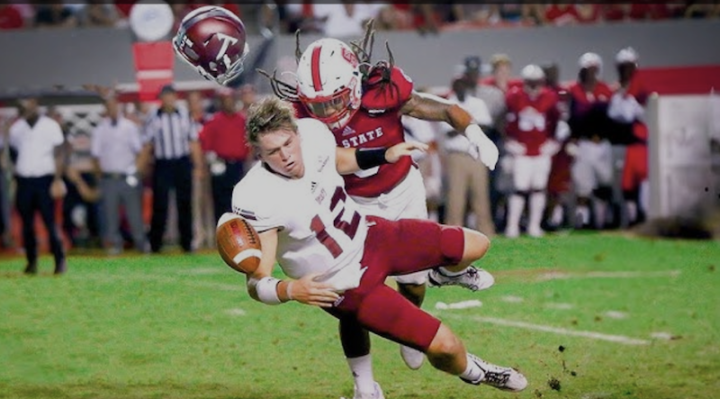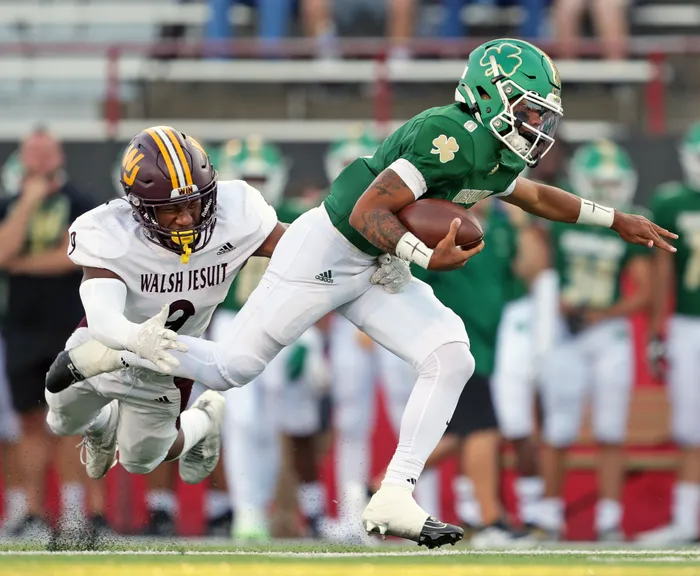How to Get on a College Football Coach’s Radar
1. Build a Strong Recruiting Profile
Your recruiting profile is the first impression you make on a coach, so it needs to be polished and professional. This should be done both Twitter as well as the GridironStuds App. Include these key components:
- Basic Information: Your name, height, weight, position, and high school.
- Stats and Achievements: Highlight your accomplishments on the field, including key stats and any awards.
- Highlight Video: A well-edited video showcasing your best plays is critical. Make it short (3-5 minutes), focused on your strengths, and include your name, position, and contact info at the start.
- Academics: Include your GPA, standardized test scores, and any academic honors. Coaches want players who qualify academically.
2. Perform on the Field
Nothing grabs a coach’s attention faster than your performance during games.
- Be Consistent: Show up big in every game. Coaches are looking for players who can perform at a high level week after week.
- Excel at Your Position: Master the fundamentals, whether it’s running precise routes, making tackles, or locking down receivers.
- Play Against Top Competition: Competing against strong opponents showcases your ability to rise to challenges.
3. Leverage Social Media
Social media is a powerful tool in today’s recruiting landscape.
- Post Your Highlights: Share your best plays on platforms like Twitter and Instagram.
- Follow Coaches: Engage with programs and coaches to get on their radar.
- Keep It Clean: Avoid posting anything inappropriate—your social media is part of your brand.
4. Attend Camps and Showcases
Camps and showcases are great opportunities to compete in front of college coaches.
- Choose the Right Camps: Attend camps hosted by colleges you’re interested in or regional showcases where multiple coaches will be present.
- Perform Well: Stand out through your effort, energy, and performance.
- Network: Introduce yourself to coaches and ask questions. Showing interest can make a lasting impression.
5. Be Proactive with Communication
Don’t wait for coaches to find you—reach out to them.
- Email Coaches: Send personalized emails to programs of interest. Include your recruiting profile, highlight video, and why you’re interested in their school.
- Call Coaches: If appropriate, make a direct call to express your interest and ask how you can improve your chances of playing for their team.
- Stay Persistent: Follow up periodically to keep your name fresh in their minds.
6. Maintain Strong Academics
Coaches prioritize recruits who qualify academically.
- Meet NCAA Requirements: Make sure you’re on track with core courses and GPA.
- Show Discipline: A strong academic record demonstrates discipline, which translates to the field.
7. Network with the Right People
- High School Coaches: Make sure your coach knows your goals so they can advocate for you.
- Current Players: Reach out to college players you know for advice and potential connections.
- Recruiting Services: Consider platforms like the GridironStuds App, which connects recruits with college coaches.
8. Make the Most of Game Visits
When invited to attend a game or visit a campus, treat it as a job interview.
- Be Engaged: Ask questions about the program and facilities.
- Show Respect: Interact politely with coaches, staff, and players.
- Follow Up: Send a thank-you email or message after your visit.
9. Stay Patient and Focused
Recruiting is a marathon, not a sprint.
- Keep Grinding: Continue improving your skills and physical attributes.
- Adapt to Feedback: Coaches may provide feedback on areas to improve—take it seriously and work on those aspects.
- Don’t Get Discouraged: If one coach isn’t interested, another might be. Stay committed to the process.
By following these steps, you’ll increase your chances of catching a coach’s attention and earning an opportunity to play at the college level. Remember, it’s not just about what you do on the field but also how you handle the recruiting process off it. Stay focused, be proactive, and showcase the qualities that make you a great addition to a team.





